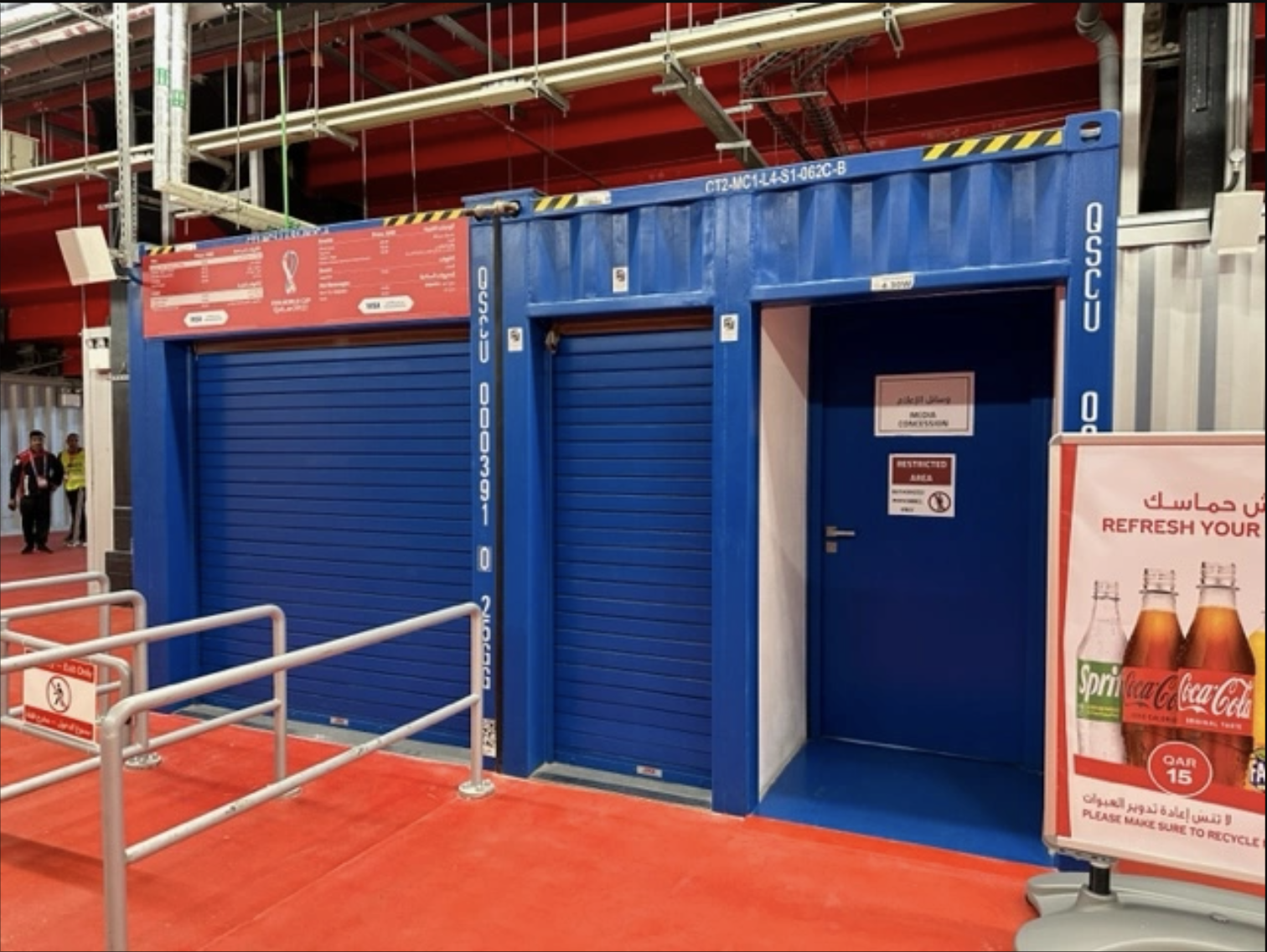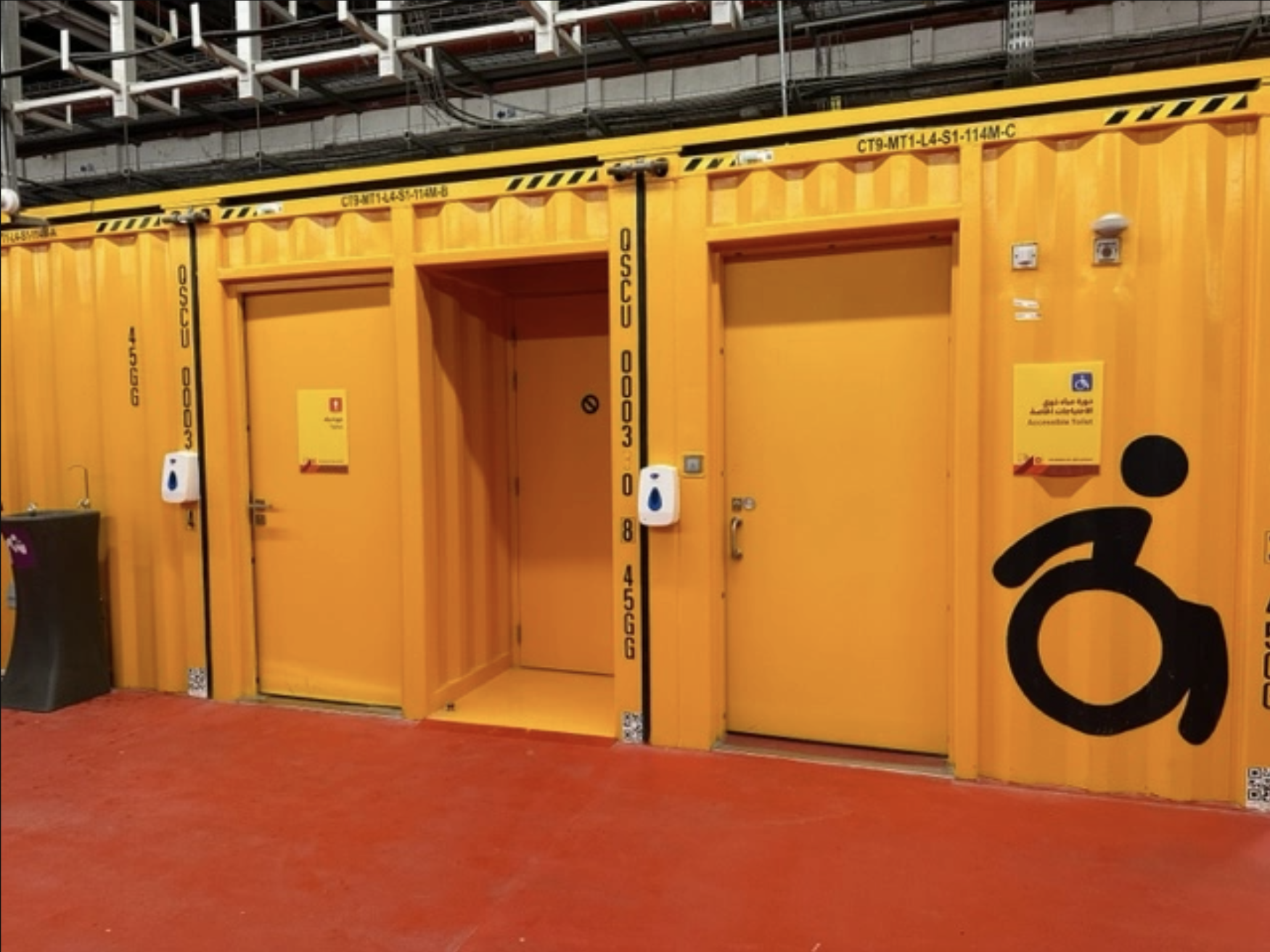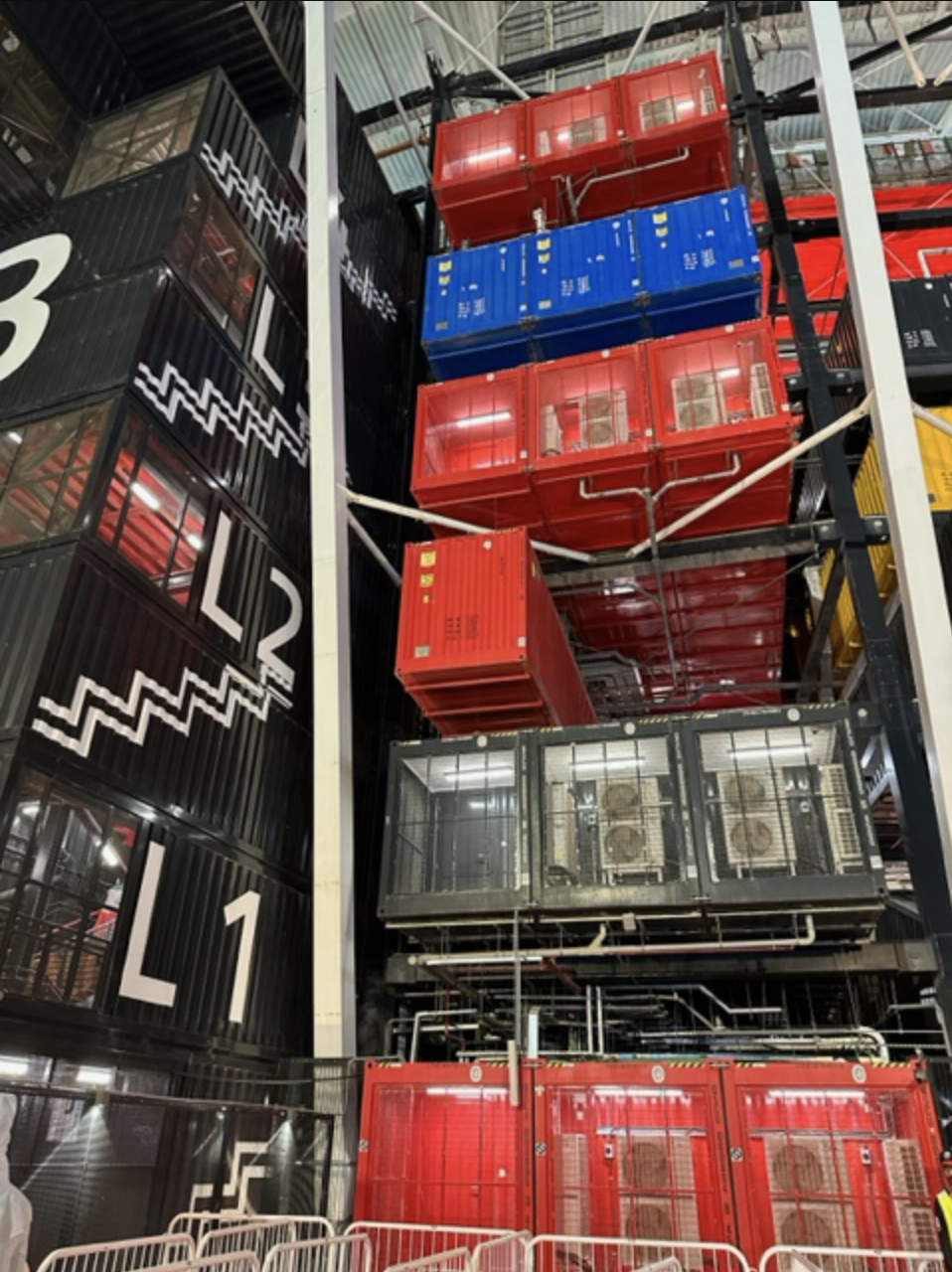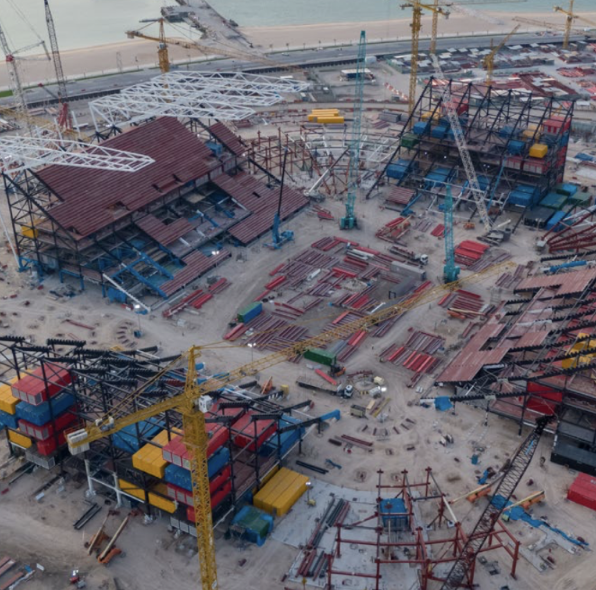Inside Stadium 974 and More During the 2022 FIFA World Cup in Qatar
Glenn Crooks, Reporting from Qatar
Stadium 974
Considering the number of stadiums designed and constructed exclusively for previous World Cups without a post-tournament formula for use – often referred to as White Elephants – the Stadium 974 in Qatar is a revelation.
Located in the Ras Abu Aboud region of Doha, Stadium 974 is a transportable stadium constructed with recycled shipping containers, inspired by their nearby port.
The 974 represents the number of containers used in assembly and is also the international dialing code for Qatar.
I attended the first of four matches hosted at the temporary venue, the 0-0 draw contested by Mexico and Poland on Tuesday. The acoustics in the tight quarters lent itself to deafening roars – especially from the Mexican supporters who comprised 90-percent of the gathering. The pictures and videos share a glimpse of the El Tri passion.
The last three World Cups in South Africa (2010), Brazil (2014) and Russia (2018) presented taxpayers with under-used stadiums that often has no local team to claim – billions of dollars for infrastructure laid to rest.
Qatar insisted that they will have no White Elephants.
For instance, The 40,000-capacity Ahmad Bin Ali Stadium, is home to Al Rayyan in the 12-team Qatar Super League and to second-tier Al-Kharitiyath Sports Club.
But the best example of resourceful application among the seven new stadiums is Stadium 974. It will be disassembled after the World Cup Final on December 18 and then transported and reassembled for further use.
There have been reports that if Uruguay’s bid to host the 2030 is successful, Stadium 974 will be one of their sites.
I had read about the structure but the view of it live is quite extraordinary. The photos here are from my walk-up to the stadium plus other containers on the inside of the structure that serve as bathrooms and concession stands.



The Souq Waqif
On my way to the Mexico-Poland tussle, I stopped to explore Souq Waqif, a marketplace in Doha.
The Mexican contingent – similar to the match – prevailed on the streets and in the outdoor cafés. But it was the euphoric cheers dominating the moment that Saudi Arabia recorded what may be the most surprising result in World Cup history. Their 2-1 over Argentina sent waves of Saudi’s to the cobblestone streets to celebrate while I sipped on my Turkish coffee.
Earlier, I purchased tamarind juice from a street vendor whose hardware and technique were worth recording the encounter.
Then I met two Welsh brothers who were pleased with the 1-1 result against the U.S.
The flag they carried represented their town club in South Wales 45 miles from the capital, Cardiff. They had asked me to take their picture and then had a conversation about their experience.
James Copeland is the manager/coach at Abergavenny – he’s played there for 30 years. Younger brother Tom is a 25-year member of the lower division club with two training sessions per week and a Saturday match. Presently, Abergavenny are top of the table.
And they are part of a substantial group of supporters – the Red Wall featuring their bucket hats.
Tom explained that singing the national anthem prior to kickoff had a special significance after a 64-year absence from the World Cup.
“It’s actually the first time it (Wales National Anthem) has been sung at the World Cup,” he said.
The bucket hats have been an essential feature for the last decade – but in Qatar there was disappointment coupled with anger when rainbow bucket hats to support LBGTQ+ rights were confiscated.
Former Wales international footballer Laura McAllister, now a professor at Cardiff University, wrote on Twitter: “So, despite fine words from @FIFAWorldCup before event, @Cymru rainbow bucket hats confiscated at stadium, mine included.”
